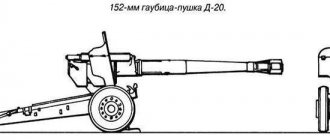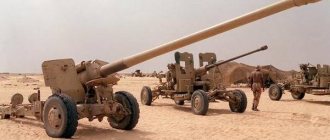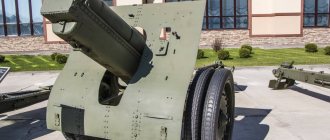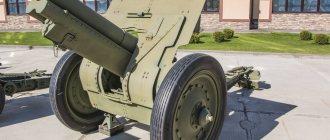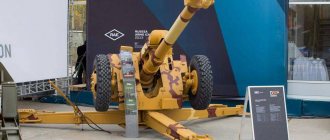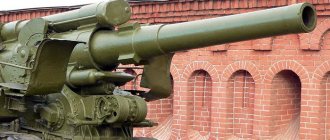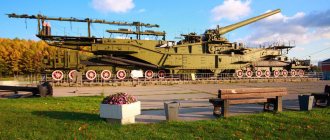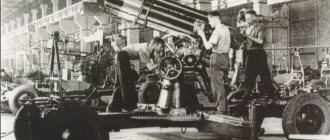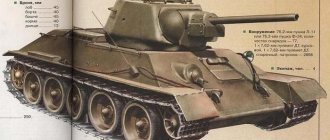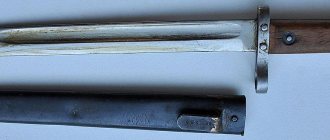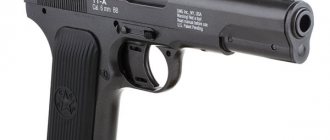Field howitzer
| Howitzer D-1 | |
| D-1 in the Museum of the Great Patriotic War, Kyiv | |
| Type | Field howitzer |
| Place of origin | Soviet Union |
| Service history | |
| In service | 1943–present |
| Used | Countries of the former Warsaw Pact and the former Soviet Union |
| Wars | World War II Arab-Israeli War Vietnam War |
| Production history | |
| Designer | F. F. Petrov |
| Developed | 1943 |
| Manufacturer | Plant No. 9 |
| Produced | 1943-1949 |
| No built | 2 827 |
| Options | D-15, arr. 1943/85 |
| Characteristics | |
| Weight | 3,600 kg (7,937 lb) |
| Length | 6.7 m (22 ft) |
| Barrel length | Bore: 3.527 m (11 ft 7 in) l/23 |
| Width | 1.9 m (6 ft 3 in) [1] |
| Height | 1.8 m (5 ft 11 in) [1] |
| Crew | 8 |
| Shell | Separate loading of charge and projectile [1] HE; 40 kg (88.2 lb) |
| Caliber | 152.4 mm (6 in) |
| Breech | Broken screw |
| Recoil | Hydropneumatic |
| Shipping | Divided Path |
| Height | -3° to 63.5° |
| Traverse | ± 17,5 ° |
| Rate of fire | 3-4 rounds/min |
| starting speed | 508 m/s (1,666 ft/s) |
| Maximum firing range | 12.4 km (7.70 mi) |
D-1 howitzer M1943
(Russian: 152-mm gaubitsa mod 1943 (D-1)..) Is a Soviet World War II-era 152.4 mm howitzer. The gun was developed by OKB F.F. Petrov in 1942 and 1943, based on the carriage of the 122 mm M1938 (M-30) howitzer and the barrel of the 152 mm M1938 (M-10) howitzer. The powerful and mobile D-1 with a wide range of ammunition significantly increased the firepower and breakthrough capabilities of the Red Army's tank and motorized rifle formations. Several hundred D-1s were produced before the end of World War II.
After World War II, the D-1 served in numerous conflicts throughout the mid to late 20th century. The long history of operation of D-1 howitzers in the national armies of many countries testifies to their qualities; The weapon still remains in service with a number of post-Soviet states and some other countries. The D-1 is considered a valuable piece of Soviet artillery. [2] [3]
Development and production[edit]
Background [edit]
In 1941, the Soviet Union decided to cease production of the 152 mm M1938 (M-10) howitzer. One of the reasons was the disbandment of the rifle corps between August and September 1941 and the subsequent removal of the corps' artillery. Moreover, all 152 mm howitzers were excluded from divisional artillery. As a result, in 1942, serial production of 152-mm howitzers ceased.
However, at the end of 1942, the rifle corps was restored and the previous artillery organization at the corps level was restored. As a result of the cessation of production of 152 mm howitzers, the Red Army Corps artillery lacked a weapon more mobile than the heavy 152 mm M1937 (ML-20) howitzer (commonly used by the Army Artillery Troops and the High Command Reserve units) but more powerful than the 122-mm howitzer. mm howitzers M1938 (M-30).
Answering a call[edit]
In 1942, trying to solve the problem of the lack of a suitable mobile 152-mm howitzer, the design bureau under the leadership of F.F. Petrova privately began developing a new howitzer based on the M-30 carriage and M-30 barrel. 10 (equipped with a muzzle brake to reduce recoil and prevent damage to the carriage). This approach made it possible to begin production of the new howitzer almost immediately from the stock of parts for both earlier guns. Given the military situation and the lack of artillery, this solution was elegant and expedient.
At the beginning of 1943, Petrov notified the People's Commissar of Armaments Dmitry Ustinov about the new project. On April 13, Ustinov informed Petrov that the State Defense Committee had requested five new guns to be sent to the training grounds on May 1. On May 5, two works were received for testing; Two days later, on May 7, the gun was recommended for adoption, and on August 8, 1943, it was officially accepted into service as the M1943 152 mm howitzer.
. A month and a half later, the first production D-1 howitzers were delivered to representatives of the Red Army. [2] [3]
Production[edit]
The D-1 was produced exclusively at Plant No. 9 (UZTM) in Sverdlovsk from the end of 1943 to 1949.
During the Great Patriotic War, howitzers were produced in small quantities, since Plant No. 9 was also responsible for the serial production of tanks. 122 mm howitzer M-30. This led to an acute shortage of 152 mm howitzers in the Red Army artillery corps until the end of the war. [3] Production D-1, pcs. [3]
| Year | 1943 | 1944 | 1945 | 1946 | 1947 | 1948 | 1949 | General |
| Number of produced | 84 | 258 | 715 | 1,050 | 240 | 240 | 240 | 2 827 |
History of creation
After the end of World War II, the USSR had several self-propelled artillery units in service. These were assault and anti-tank self-propelled guns, designed for direct fire. It should be noted that a similar situation was observed in the armies of other countries. There were other types of self-propelled guns capable of hitting the enemy from closed positions, but there were relatively few of them.
However, the advantages of self-propelled artillery compared to towed artillery were obvious, so the development of new self-propelled guns was actively pursued in many countries around the world. Soviet designers were also engaged in similar research, but after Nikita Khrushchev came to power, all work in this direction was suspended.
Khrushchev believed that the future belonged to missiles, and in the event of a large-scale nuclear war, guns would not be needed at all. However, very soon the fallacy of this position became clear. Several local conflicts in the 50s and 60s showed that guns remained the main means of defeating the enemy, and artillery was still the “god of war.”
However, work on new domestic artillery systems began only after Khrushchev left the post of head of state.
Before the start of design work, the experience of using self-propelled guns during the last war was carefully analyzed, and the latest trends in the development of this type of weapon were taken into account.
VNII-100 from 1963 to 1965 carried out preliminary research work on the appearance and design of the future self-propelled gun. It was decided to develop the artillery part of the future self-propelled guns on the basis of the towed 152-mm howitzer D-20. The gun design, ballistics and ammunition of this gun were taken unchanged.
Regarding the chassis of the future self-propelled gun, two options were considered: “Object 124” (PU “Krug” air defense system) and the chassis of the promising medium tank “Object 432”. During the research, it was found that a front-engine layout would be more suitable for self-propelled guns, so for the future Akatsiya it was decided to use the Krug air defense missile launcher chassis.
Two prototypes were manufactured already in 1968; factory tests began in 1969, which showed excessive gas contamination in the fighting compartment during firing. They were able to cope with this problem, and in 1971 the new self-propelled gun was put into service under the designation 2S3 “Akatsia”. Serial production of the self-propelled gun was launched at UZTM back in 1970 (that is, even before it was put into service), it began to arrive in artillery regiments of motorized rifle and tank units to replace the 152-mm howitzers D-1, D-20 and ML-20 .
During the same period, work was underway on the creation of a 152-mm howitzer with cap loading. However, studies have shown that the use of cap charges does not provide any advantages in accuracy, firing range, or rate of fire of the gun, so further developments in this direction were considered inappropriate.
In the early 70s, the 2S3 Akatsiya self-propelled gun was modernized, primarily affecting the design of the loading mechanism and the layout of the vehicle's fighting compartment. The two drum-type mounts on the basic modification were replaced with one, which made it possible to increase the ammunition load of the installation to 46 rounds. The location of the hatches in the rear part and the turret of the self-propelled gun was also changed and a mechanized supply of shots from the ground was installed. In addition, a new radio station was installed on the self-propelled guns. The modernized "Acacia" received the index 2С3М. It was launched into series in 1975.
In 1987, another modification of the self-propelled guns was developed, it was named 2S3M1. This vehicle was equipped with a 1P5 panoramic gunner's sight, new intercom equipment, and a more advanced radio station. In addition, the self-propelled gun was equipped with equipment for receiving information from the battery commander’s vehicle.
The next modernization of the Akatsiya was carried out after the collapse of the USSR; it received the name 2S3M2. The self-propelled gun received an automated guidance and firing control system 1V514-1 “Mekhanizator-M”, as well as a new system for setting up smoke screens. At the same time, a variant of the 2S3M2 Akatsiya self-propelled gun was developed for NATO caliber.
The latest modernization of the vehicle affected the artillery part of the installation. The 152-mm 2A33 howitzer was replaced with a more powerful 2A33M gun of the same caliber, which made it possible to increase the firing range and significantly expand the range of ammunition used. The installation was also equipped with more advanced on-board equipment. This modification was named 2S3M3, while it is considered an experimental vehicle.
Description[edit]
Composition of the D-1 howitzer: 1 - split tracks 2 - bump stop 3 - shield 4 - recoil devices (buffer and recuperator) 5 - barrel 6 - muzzle brake 7 - wheels 8 - suspension Parts 1, 7 and 8 belong to the carriage; 2, 4, 5 and 6 make up a group of trunks
The D-1 howitzer was essentially a combination of the barrel of a 152 mm howitzer model 1938 (M-10) on the carriage of a 122 mm howitzer M1938 (M-30). Since the new carriage was lighter than that of the M-10, a massive muzzle brake with two DT-3 baffles was installed on the barrel to soften recoil shocks. The breech block was an interrupted screw type, the recoil system consisted of a hydraulic buffer and a hydropneumatic recuperator. The separately loaded ammunition included a variety of projectiles and eight different propellant charges in the cartridges.
The carriage was almost identical to the M-30 carriage. It had suspension and steel wheels with pneumatic rubber tires. Initially, the routes had a riveted structure, but over time they were replaced in production with welded ones. Late production parts were equipped with rollers to make them easier to handle. The time to prepare for battle was about two minutes. In an emergency, it was possible to fire without splitting the traces; however, this came at the cost of dramatically reduced turn (1°30'). Since the gun was not equipped with a limber, it could only be towed by vehicles. The maximum towing speed was 40 km/h on paved roads, 30 km/h on paved roads and 10 km/h off-road. To protect the crew from bullets and shell fragments, the gun was equipped with a shield. [2] [3] [4]
- Recoil devices
- Muzzle brake
- Car suspension
- Car suspension
- Right side of the breech
- Left side of the bolt with panoramic sight
- Carriage tracks
- Weapon Shield
Comparison with modern howitzers[edit]
From a technical and tactical point of view, the D-1 project equipped the corps artillery of the Red Army (RKKA) with a modern 152 mm howitzer, combining good mobility and firepower. Compared to a typical modern howitzer of similar caliber, the D-1 had a shorter range but was much lighter. For example, the German 15 cm sFH 18 had a range of 13,325 meters—about one kilometer more than the D-1—but also weighed almost two tons more (5,510 kilograms when stowed). The same can be said about the American 155-mm howitzer M1 (14,600 meters, 5,800 kilograms) or the 149-mm howitzer produced by the Italian Ansaldo (14,250 meters, 5,500 kilograms). A German howitzer with characteristics similar to those of the D-1 - 15 cm sFH 36 - did not reach mass production. Compared to older examples such as the French Schneider Model 1917 (11,200 meters, 4,300 kg), the D-1 had an advantage in both weight and range.
Description of design
The 2S3 Akatsiya self-propelled gun has a classic turret design with the engine located in the front of the vehicle. The body and turret of the self-propelled gun are made of rolled armor steel; it holds an armor-piercing bullet at a distance of 300 meters, and also protects the crew from fragments of mines and shells. The frontal armor of the turret and hull is 30 mm thick, and the thickness of the side armor is 15 mm.
The installation body is divided into several compartments: control, power and fighting compartments. The control compartment is located at the front of the case on the left side. It contains the driver's seat, instruments and controls. On the right in front is the power compartment, which houses the engine, transmission, as well as lubrication, cooling, starting and fuel supply systems.
The central and rear part of the vehicle is occupied by the fighting compartment; a welded turret with a 152 mm gun is installed on its roof. In the fighting compartment there are seats for three crew members: the vehicle commander, gunner and loader. The commander's and gunner's seats are located to the left of the gun, and the loader's is to the right of it. The installation commander's seat is equipped with a rotating turret, which is installed on the roof of the turret. Also on the roof of the turret there is a commander's hatch and a loader's hatch. A 7.62 mm machine gun is installed above the commander's hatch for firing at air targets. The ammunition stowage is located in the aft part of the combat compartment.
The 2S3 Akatsiya self-propelled gun is armed with a 152-mm 2A33 howitzer, which is almost identical to the D-20 towed howitzer. It consists of a barrel, bolt, clutch, recoil device, muzzle brake, cradle and lifting mechanism. The 2A33 barrel is a pipe connected by a coupling to the breech; there is a muzzle brake at the muzzle of the barrel. The gun's bolt is a vertical wedge; the shot can be fired either manually or using an electric trigger. After firing, the cylinders of the recoil device roll back along with the barrel.
The gun is loaded using a separate cartridge case: first, a projectile is sent into the barrel, and then a cartridge case with gunpowder. Most 152 mm artillery systems are designed in a similar way.
To facilitate the work of the loader, the gun is equipped with an electromechanical rammer for the projectile and charge, as well as a tray for catching the spent cartridge case. The gun's anti-recoil devices are a hydraulic recoil brake mounted in the breech and a pneumatic knurler filled with nitrogen.
The lifting mechanism ensures vertical guidance of the gun in the range from −4 to +60°.
The transportable ammunition load of the Akatsiya self-propelled gun is 40 rounds (for the 2S3 modification); on later modifications of the installation, the number of rounds is increased.
The Akatsiya self-propelled gun can fire with different types of ammunition. The main ammunition of the self-propelled gun includes high-explosive fragmentation shells (firing range of more than 17 km), shells with an improved aerodynamic shape, the firing range of which is 17.4 km, and it is possible to use guided projectiles of the Krasnopol and Centimeter types. In addition, the self-propelled gun can fire chemical, illumination, shrapnel and cluster munitions. To combat enemy armored vehicles, cumulative and armor-piercing shells are used.
The 2S3 Akatsiya self-propelled gun can use ammunition with a 1 kT nuclear warhead, and the firing range is 17.4 km.
In addition to the gun, the Akatsiya self-propelled gun is armed with a 7.62 mm PKT machine gun.
The gunner's position is equipped with two sights: a panorama for firing from closed positions and an OP5-38 sight for direct fire. A TKN-3A sight is installed in the commander's cupola, and the driver's seat is equipped with prismatic observation devices and a night vision device.
The Akatsiya self-propelled gun is equipped with an R-123 radio station, which provides communications at a distance of 28 km.
The self-propelled guns are equipped with a V-shaped diesel engine V-59U with twelve cylinders, its power is 520 hp. With. In addition to diesel fuel, he can use kerosene.
The chassis of the Akatsiya self-propelled gun is a modified chassis of the Krug air defense missile launcher; it consists of six pairs of road wheels, four pairs of support rollers, idler wheels are located at the rear of the vehicle, and drive wheels are located at the front. The self-propelled gun's suspension is individual torsion bar.
Organization and employment [edit]
D-1 was used by corps artillery and reserve main command units. In 1944, the Red Army rifle corps each had one artillery regiment. These regiments consisted of five batteries (20 guns in total) equipped with the D-1 along with various other 152 mm howitzers, the 122 mm M1931/37 (A-19) gun, the 152 mm M1937 (ML-20) howitzer or 107 -mm gun arr. 1910/30. The reserve of the High Command included howitzer regiments (48 units) and heavy howitzer brigades (32 units). They could be organized into artillery divisions. [3]
The Red Army used D-1 howitzers from 1944, during the final stages of World War II. The D-1 was used primarily against personnel, fortifications, and key installations behind enemy lines. The G-530 anti-concrete projectile was also sometimes used against armored vehicles with good results. During its service, the pistol earned a reputation for reliability and accuracy. [2] The D-1 was finally retired in the mid-seventies.
After the war, the pistol was supplied to many countries around the world, including former Warsaw Pact allies such as Poland. As of the early 2000s, it remains in service in Afghanistan, Albania, China, Cuba, Hungary, Iraq, Mozambique, Syria, Vietnam and other countries. The pistol was used in the Arab–Israeli conflict as well as some conflicts in the former republics of the Soviet Union. [3] The long history of operation of D-1 howitzers in the national armies of many countries is additional evidence of their qualities.
The D-1 was used in April 2016 in battles between the Nagorno-Karabakh Defense Army and Azerbaijani forces. It was used by the NKR Defense Forces. [ citation needed
]
Surviving D-1 howitzers can be seen in various military museums and memorials, such as the Museum of Artillery and Engineering Troops, St. Petersburg, Russia; in the Museum of the Heroic Defense and Liberation of Sevastopol on Sapun Mountain, Sevastopol; at the Museum of the Great Patriotic War, Kyiv, Ukraine; in the Poznań Citadel, Poland and in Polotsk, Belarus, as a commemorative monument.
- D-1 in Polotsk.
- D-1 in the Poznan Citadel.
- D-1 in the Artillery Museum, St. Petersburg.
- D-1 in the museum on Sapun Mountain, Sevastopol
In service
- Armenia - 2 D-1, as of 2017
- Kyrgyzstan - 16 D-1, as of 2017
- China - some Type-54 (D-1), as of 2017. in service there is a significant number (2106 units together with D-20) of Type-54 guns (copy of D-1), as of 2016
- Cuba - some D-1, as of 2017
- Mozambique - 12 D-1, as of 2017
- Rwanda - 29 Type-54 (D-1) in disrepair, as of 2017
- Turkmenistan - 17 D-1, as of 2017
Options [edit]
In addition to the towed howitzer, Petrov’s team also developed an automobile version of the D-1. The offensive actions of the Red Army in the summer and fall of 1943 renewed interest in the idea of a heavy "artillery" tank like the KV-2, which could provide close fire support to rifle and tank units and destroy heavy fortifications. The likely reasons for the creation of such a vehicle were the cessation of mass production of the SU-122 medium assault gun and the redirection of the SU-152 heavy assault guns to anti-tank operations. The D-1 tank version was originally intended for installation in the KV-1 heavy tank variant. It used the 85mm D-5 mount, leading to the unofficial name D-1-5 and eventually the official designation D-15
. Only one example was built. There is no information that the gun is installed on the KV tank. By October 1943, Soviet authorities expected mass production of the powerful IS-2 heavy tank to begin; as a result, the idea of creating a specialized artillery tank based on the outdated KV chassis was abandoned. [5]
Another project was also considered, combining the T-34 tank chassis with the D-15 cannon. Average
the assault gun, designated
SU-D15
, was intended to replace the SU-122. Although the project received great support from the authorities, it was never put into production, both due to its shortcomings (the heavy gun strained the suspension too much and ammunition stowage was too limited) and because it was replaced by ISU-152. . However, lessons learned from installing a powerful gun on the T-34 allowed the rapid development of the SU-100 tank destroyer. [6]
Projects of self-propelled guns armed with the D-1 howitzer[edit]
Despite the lack of need for the tank version of the D-1, the designers of medium self-propelled guns based on the T-34 tank, led by L. I. Gorlitsky, became interested in the D-15 howitzer. The discontinuation of the SU-122 and complaints from front-line commanders about the insufficient firepower of the SU-85 against the enemy's long-term and strong wooden-earth firing points led to the start of development of projects for medium self-propelled guns based on the T-34 tank, armed with more powerful guns than the 85 mm D-5S gun. One of these projects was the SU-D15 self-propelled gun, where the main armament was the experimental D-15 howitzer from plant No. 9. Review of the project by a special commission led to its positive assessment; the possibility of manufacturing and the combat value of such an self-propelled gun were not questioned. However, the commission also noted disadvantages - the small amount of ammunition carried, the overload of the vehicle's front rollers. Arming medium self-propelled guns with such powerful guns was considered unnecessary in light of the widespread mass production of heavy ISU-152; the SU-D15 was not manufactured in metal. However, the design experience of placing a powerful artillery system in a medium self-propelled gun was later useful in the development of the SU-100 tank destroyer.
Ammunition[edit]
1 - high-explosive fragmentation projectile OF-530, 2 - fragmentation projectile O-530, 3 - cumulative (anti-concrete) projectile G-530.
The D-1 carried a large variety of ammunition, including high explosive, armor-piercing, cumulative, fragmentation, illumination, and chemical.
The D-1 used split-loading ammunition with eight different charges. The charges included the "full charge" of Zh-536 and smaller charges from "first" to "sixth", which was the smallest. And the “special charge” was used with the BP-540 HEAT projectile. Propelling charges were produced in “full” and “third” versions at ammunition factories. All other charges were obtained from them by removing small bags of gunpowder from the charging cartridge. To extinguish the flame there was a special chemical mixture that had to be inserted into the cartridge before the night shot. [4] 152 mm shells for the D-1 weighed about 40 kg; hard work for the loaders, who had to carry the shells alone.
In fragmentation mode, the OF-530 projectile produced fragments that covered an area 70 meters wide and 30 meters deep. In high-explosive fragmentation mode, the exploding shell created a crater with a diameter of approximately 3.5 meters and a depth of approximately 1.2 meters. [2] Although the D-1 was retired from service in the mid-1970s, the OF-530 is still fired by the Russian Army's modern 152mm artillery guns.
The G-530 HEAC anti-concrete projectile had an initial speed of 457 m/s when fired with the “first” charge. At a range of one kilometer it had a terminal velocity of 358 m/s and was capable of penetrating up to 80 centimeters of reinforced concrete before detonating a charge of TNT that increased overall penetration to 114 centimeters. The G-530 could not be fired with a "full" charge without putting the crew at risk of the shell exploding in the barrel. A special version of the projectile, G-530Sh, was developed for use with a full charge. [4]
The BP-540 HEAT round was not used during World War II. It had an armor penetration of 250 millimeters at an incidence angle of 90°, 220 millimeters at 60°, 120 millimeters at 30°. [4]
In the late 1950s, old stocks of D-1 ammunition were removed from Soviet inventory. The only surviving shells were OF-530, O-530, G-530/G-530Sh and possibly chemical shells. The Soviet Army also had a 152 mm nuclear projectile, but it is unclear whether this projectile could be used with the D-1. [7]
| Available Ammo [3] | |||||
| Type | Model | Weight, kg | OH mass, kg | Initial bullet speed, m/s | Range, m |
| Armor-piercing shells | |||||
| Naval semi-automatic | model 1915/28 | 51,07 | 3,2 | ||
| HEAT | BP-540 | 27,44 | 560 | 3 000 | |
| Anti-concrete shells | |||||
| Anti-concrete shell | G-530 / G-530Sh | 40,0 | 5.1 | 508 | 12 400 |
| High explosive and fragmentation shells | |||||
| HE-Fragmentation, steel | OF-530 | 40,0 | 5,47-6,86 | 508 | 12 400 |
| HE fragmentation, steel iron | OF-530A | 40,0 | 5,66 | 508 | 12 400 |
| He is old | F-533 | 40,41 | 8.0 | ||
| He is old | F-533K | 40,68 | 7.3 | ||
| He is old | F-533N | 41,0 | 7.3 | ||
| He is old | F-533U | 40,8 | 8,8 | ||
| OH, steel iron, old French | F-534F | 41,1 | 3.9 | ||
| HE'S over 15 | F-521 | 41,7 | 7,7 | ||
| HE, British, for 152 mm Vickers howitzer | F-531 | 44,91 | 5,7 | ||
| Shrapnel shells | |||||
| Shrapnel from 45 sec. a tube | Ш-501 | 41,16–41,83 | 0.5 (680-690 rounds) | ||
| Shrapnel with T-6 tube | Sh-501T | 41,16 | 0.5 (680-690 rounds) | ||
| Lighting shells | |||||
| Lighting, 40 sec. | S 1 | 40,2 | |||
| Chemical shells | |||||
| Chemical howitzer shell | HS-530 | 38,8 | |||
| Chemical howitzer shell | HN-530 | 39,1 | |||
| Chemical (post-war) | ZHZ | ||||
Tactics and technical characteristics of the D-20 gun
- Designer: OKB-9 - Developed: 1947 - Manufacturer: , Motovilikha Plants - Options: 52-P-546, 52-P-546M, M-390
Crew (calculation): 8 people
Caliber: 152 mm
Weight of the D-20 gun
— Full combat weight, kg: 5650
Overall dimensions of the D-20 gun
- Clearance, mm: 380 - Length, mm: 8690 - Barrel length, mm: 5195 (34 klb) - Width, mm: 2317 - Height, mm: 1925..2520
- Shutter: Vertical semi-automatic wedge shutter - Recoil device: hydraulic buffer and hydropneumatic recuperator - Carriage: with sliding frames
— Elevation angle: from −5° to 45° - Rotation angle: 58°
Rate of fire of the D-20 cannon
— 5-6 (peak) shots/min
Initial projectile speed, m/s: OFS: 511..655, BS: 600, BKS: 680
Firing range of the D-20 cannon
— Sighting range, m: 17410 - Maximum range, m: 24000 (ARS)
— Sight: PG-1M and OP-4M
— Carriage speed on the highway, km/h: up to 60
Notes[edit]
- ^ abc Foss, Christopher (1977). Jane's Pocket Book of Towed Artillery
. New York: Collier. paragraph 115. ISBN 0020806000. OCLC 911907988. - ^ abcde Shunkov V.N. - Weapons of the Red Army
- ^ abcdefgh Shirokorad A.B. — Encyclopedia of Soviet Artillery
- ^ abcd Ballistic tables for the 152 mm howitzer mod. 1943
- ↑
Kolomiets M.V. — K.V. Breakthrough tank "Klim Voroshilov" - ↑
Zheltov I.G., Pavlov I.V., Pavlov M.V., Solyankin A.G. — Soviet medium self-propelled guns 1941-1945. - Shirokorad A.B. — Nuclear Ram of the 20th Century
Prototypes based on D-1[edit]
During production, the design of the gun as a whole did not change significantly. However, based on the barrel group of the D-1 howitzer, an attempt was made to develop its tank version. The transition of the Red Army to active offensive operations in mid-1943 and the great need for mobile means to combat enemy fortifications unexpectedly revived the concept of the “artillery” heavy KV tank with a powerful howitzer instead of the standard 76-mm cannon - in fact, a return to the KV-2. Probably the reason for this turn of events was the discontinuation of the SU-122 medium assault guns and the diversion of the heavy SU-152 for anti-tank purposes. The chief designer of Plant No. 9, F. F. Petrov, quickly developed a tank version of the D-1 howitzer by installing it on the mount of an 85-mm D-5 tank gun. This “hybrid” of two artillery systems was first given the “combined” index D-1-5, which later became the official designation D-15. One experimental D-15 gun was manufactured, which was sent to tank builders in Chelyabinsk, but there is no information about its installation in the turret of the KV-85 tank. On the other hand, already in October 1943, new IS-2 tanks were expected, armed with a powerful 122-mm cannon and ISU-152 self-propelled guns based on them, so the need for a specialized artillery tank disappeared, and the project of installing the D-15 on the KV chassis was closed.
Sources [edit]
| Wikimedia Commons has media related to 152 mm howitzer model 1943 (D-1) . |
- Shunkov V.N. — Weapons of the Red Army
, Mn.
Harvest, 1999 (Shunkov V.N. - Weapons of the Red Army.
- Mn.: Harvest, 1999.) ISBN 985-433-469-4 - Shirokorad A.B. - Encyclopedia of Soviet Artillery
- Mn. Harvest, 2000 (Shirokorad A. B. Encyclopedia of domestic artillery. - Mn.: Harvest, 2000., ISBN 985-433-703-0) - Ivanov A. - Artillery of the USSR in the Second World War
- St. Petersburg Neva, 2003 (Ivanov A.
Artillery of the USSR in the Second World War
. - St. Petersburg, Publishing House Neva, 2003., ISBN 5-7654-2731-6) - Ballistic tables for 152 mm howitzer
mod. 1943, MO MO, 1968 - Firing tables for 152-mm howitzer mod. 1943 - M., Military Publishing House of the Ministry of Defense, 1968. - Zheltov I.G., Pavlov I.V., Pavlov M.V., Solyankin A.G. — Soviet medium self-propelled guns 1941–1945
, Moscow, 2005, 48 p. (Zheltov I.G., Pavlov I.V., Pavlov M.V., Solyankin A.G. Soviet medium self-propelled artillery installations 1941-1945 - M.: Publishing House LLC, 2005. - 48 pp. ISBN 5- 94038-079-4) - Kolomiets M.V. - KV.
Breakthrough tank "Klim Voroshilov" , Moscow, 2006, 136 p. (Kolomiets M.V. KV. “Klim Voroshilov” - breakthrough tank - M.: Collection, Yauza, EKSMO, 2006. - 136 pp.: Ill. ISBN 5 -699-18754-5) - Shirokorad A.B. - Nuclear ram of the 20th century
, Moscow, 2005 (Shirokorad A. B. Atomic ram of the 20th century - M. Veche, 2005)
Project evaluation[edit]
The D-1 howitzer, at a minimum, was not inferior in its characteristics to the best world models of guns of this class. It fully satisfied the requirements of the Red Army in terms of mobility, power and firing range. The wide distribution of the D-1 throughout the countries of the world and its long service in their national armies serve as sufficient confirmation of this.
For comparison, the most popular German 15 cm heavy field howitzer sFH18 had a maximum firing range of 13,325 m, surpassing the D-1 by almost a kilometer; but at the same time it was almost 2 tons heavier (travel weight 5510 kg), which greatly limited mobility. The Germans failed to put the more advanced sFH36 howitzer, which has excellent characteristics (firing range 12,500 m, weight in the stowed position 3,500 kg), into large-scale production. The Czech 15-cm howitzer K4 (German name sFH37(t)) had a firing range of 15,750 m and a mass of 5,730 kg, significantly superior to the D-1 in terms of firing range, but at the same time greatly inferior in mobility (this weapon is closer to powerful howitzer guns ). The same can be said about the 149 mm Italian howitzer (14,250 m, 5500 kg) and the American 155 mm M1 howitzer (14,600 m, 5800 kg). French 155-mm howitzers Schneider mod. 1917 were inferior to the D-1 both in firing range (11,200 m) and in weight (4,300 kg), and by the beginning of World War II they were clearly outdated, like the British 6-inch Vickers howitzers created in 1915.
Interesting facts[edit]
- Like other 152 mm guns, the work of the loader and carrier in the crew was very difficult - it was necessary to carry shells weighing over 40 kg alone.
- The 53-OF-530 shells, which were developed in the late 1930s and used by the D-1 howitzer, are suitable for firing from more modern howitzers in service with the Russian Army.
- The method of manufacturing concrete-piercing shells for the D-1 howitzer influenced their combat characteristics: the 53-G-530Sh shell could be fired at full (the most powerful) charge, but the 53-G-530 shell was strictly prohibited, in order to avoid its rupture in the barrel guns. The maximum charge allowed for the 53-G-530 was the first one; accordingly, its initial speed and depth of penetration into the concrete were less than those of the 53-G-530Sh.
- Unlike many other types of guns, the Finnish army, apparently, did not manage to capture a single serviceable D-1 howitzer - there is no D-1 howitzer in the rich exhibition of the Finnish artillery museum in Hämeenlinna.
